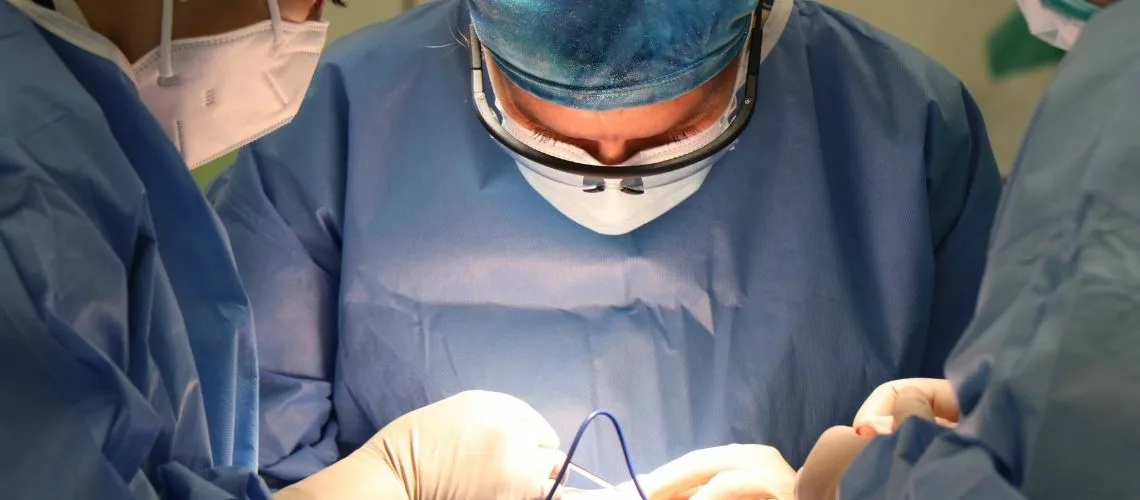Losing weight can cause sagging breasts because the reduction in fat volume affects their firmness and shape. Skin and connective tissues may not fully contract, leading to a drooping appearance.
Factors that influence breast sagging after weight loss include age, skin elasticity, genetic predisposition, and the amount of weight lost. Rapid weight reduction increases the risk of noticeable sagging.
Preventive strategies for breast sagging involve gradual weight loss, supportive bras, and strength training for chest muscles. These methods help maintain better breast contour during body transformation.
Corrective treatments for sagging breasts after weight loss include mastopexy (breast lift) and augmentation. These surgical interventions restore shape, firmness, and symmetry to achieve a more youthful appearance.
How Does Weight Loss Cause Breast Sagging?
Weight loss causes a decrease in the fat tissue and a weakening of the supporting structures in the breasts. This process leads to a loss of breast volume and insufficient skin elasticity, resulting in a more droopy appearance of the breasts:
- Decrease in skin elasticity
- Weakening of supportive ligaments
- Loss of fat tissue
During weight loss, the skin can struggle to adapt to rapid changes. Especially in individuals who lose a significant amount of weight, the skin becomes loose and unable to rebound. The reduced elasticity prevents the breasts from maintaining their original shape:
- Smoking
- Aging
- Genetic factors
Cooper’s ligaments are important connective tissues that support the breasts. Rapid weight loss causes these ligaments to stretch and lose their resilience. Over time, it becomes impossible for them to return to their former state, which further increases sagging.
The effects of weight loss on the breasts are not solely an aesthetic concern; they can also have psychological impacts. Sagging breasts can negatively affect a person’s self-confidence. Individuals facing such problems may seek solutions through exercise, the right choice of underwear, or surgical methods. Surgical procedures can tighten the loosened tissue and make the breasts appear firmer.
Which Factors Influence the Degree of Breast Sagging After Weight Loss?
Several factors influence the degree of breast sagging after weight loss. These factors can vary from an individual’s genetic makeup to their lifestyle. Here are the main elements that affect breast sagging:
- Age
- Genetics
- Rapid weight loss
- Large breast size
- Skin elasticity
- Hormonal changes
- Pregnancy history
The aging process reduces collagen production in the body, thus decreasing skin elasticity. Genetic factors play a major role in determining the resilience of skin structure. Meanwhile, rapid and significant weight loss can stretch the skin and connective tissues, exacerbating sagging. Individuals with larger breasts may experience a more noticeable sagging effect due to the loss of fat tissue.
Lifestyle factors that affect skin elasticity are also important. Smoking, an unhealthy diet, and prolonged exposure to sunlight weaken the skin’s ability to tighten. Hormonal changes such as menopause can also reduce skin firmness and the density of breast tissue. In addition, pregnancy and breastfeeding can weaken breast structure and lead to sagging.
Which Surgical Options Are Available to Correct Breast Sagging After Weight Loss?
Various surgical methods can be used to correct breast sagging after weight loss. These procedures aim to improve the volume, shape, and position of the breasts. The choice of method depends on the individual’s needs, breast structure, and aesthetic expectations:
- Mastopexy
Raises and reshapes droopy breasts. Excess skin is removed, and the areola can be reduced; does not increase breast volume.
- Breast Augmentation
Uses silicone implants or fat transfer to increase volume; does not correct sagging if done alone.
- Augmentation Mastopexy
Combines lifting and augmentation for a fuller, lifted appearance; may carry higher risks.
- Auto-Augmentation
Uses one’s own breast tissue to correct volume and shape; does not involve implants.
- Internal Bra Technique
Adds support to the breast using biological or biodegradable materials to help prevent recurring sagging.
The changes that occur in the breasts with weight loss can affect individuals physically as well as psychologically. Surgical options help address aesthetic concerns and boost self-confidence. However, when deciding on a method, it’s important to consider details such as the risks of the procedure and the recovery process.
What Are the Risks and Benefits of Surgical Procedures for Sagging Breasts?
Breast lifting and tightening surgeries are commonly preferred aesthetic procedures for reshaping droopy breasts and achieving a more youthful appearance. These operations have notable benefits and risks.
Benefits:
- A firmer and more aesthetic breast contour
- Improved position of the nipple and areola
- Increased self-confidence and better body image
Risks:
- Permanent or noticeable scarring
- Temporary or permanent changes in sensation
- Differences in shape or position after surgery
- Complications from anesthesia
- Bleeding or hematoma
- Risk of infection
- Prolonged recovery period
Breast lifting surgeries typically aim to correct deformities in the breasts caused by factors like aging, pregnancy, and weight loss. However, the success of this operation depends on the individual’s skin elasticity, overall health, and the surgeon’s expertise. Before undergoing surgery, it is important for patients to clearly communicate their expectations and evaluate potential outcomes. Additionally, following the surgeon’s recommendations during the postoperative period is crucial for speeding up recovery.
How Should One Prepare for Breast Surgery After Weight Loss?
If you plan to address post-weight-loss breast sagging through surgery, the preparation process must be carried out carefully. Following specific steps is vital to ensure a successful procedure and smooth recovery:
- Maintain a stable weight.
- Follow a balanced and nutritious diet.
- Quit smoking.
- Inform your surgeon about any medications you are taking.
- Avoid overly strenuous physical activities before surgery.
- Undergo necessary health tests, blood work, and imaging tests.
- Prepare a home environment that will facilitate your recovery.
Being at a stable weight prior to surgery is critical for achieving lasting results. Additionally, maintaining a balanced diet helps your body cope better with the postoperative recovery period. In particular, a protein-, vitamin-, and mineral-rich diet supports faster wound healing after surgery.
Smoking poses serious risks during surgery and recovery. It impairs circulation and increases the risk of infection, so you should quit smoking at least six weeks before the surgery date. Providing information about any medications you use helps reduce the risk of bleeding during the operation. In particular, aspirin and similar drugs should be discontinued before surgery.
Ensuring you have everything you need for the home recovery period will make the process easier. It is helpful to have someone available to assist you in the first few days as you rest. Take care to have comfortable clothing, easily accessible personal care items, and a restful environment to avoid discomfort after the procedure.
What Is the Recovery Process Like After Breast Surgery for Sagging?
The recovery process after breast surgery requires careful monitoring and attention to help the body adapt and achieve the best possible outcome. Following the doctor’s instructions is crucial for a fast and healthy recovery.
First 24 hours:
- You may experience mild pain.
- Dressings or bandages are used.
- Drainage tubes may be inserted to prevent fluid buildup.
- It is important to rest and avoid strenuous movements.
First week:
- Swelling and bruising may appear.
- Wearing a compression garment or supportive bra is recommended.
- Salty foods should be avoided.
- You should lie on your back.
2-4 weeks:
- Light household chores can be done.
- Avoid heavy lifting and strenuous activities.
- Monitor for signs of infection.
4-6 weeks:
- You can gradually resume more regular activities.
- High-impact sports and heavy lifting are not recommended.
- Swelling subsides, and the breast shape begins to settle.
2-6 months:
- Breast tissue settles completely.
- Swelling largely disappears.
- Proper supportive bras should be used.
During the postoperative recovery, it is crucial to attend regular follow-up appointments and adhere to your doctor’s recommendations to ensure lasting results. Paying attention to dietary habits, drinking plenty of water, and avoiding smoking and alcohol can speed up the healing process. Additionally, dedicating time to psychological recovery after surgery—and seeking professional support if needed—can make this period more comfortable.
References
- Handel, N., & Silverstein, M. J. (2006). Breast reduction and weight loss: Impact on outcomes. Plastic and Reconstructive Surgery, 118(1), 45-50.
- Brown, A. J., et al. (2010). The effect of massive weight loss on breast anatomy: Implications for mastopexy. Aesthetic Surgery Journal, 30(5), 684-691.
- van der Beek, E. S., et al. (2012). Long-term aesthetic results after body contouring surgery following massive weight loss: Is the timing of surgery important? Obesity Surgery, 22(11), 1737-1745.
- Kitzinger, H. B., et al. (2014). The impact of preoperative weight loss, body mass index, and weight regain on outcomes in body contouring surgery. Journal of Plastic, Reconstructive & Aesthetic Surgery, 67(2), 211-217.

Op. Dr. Erman Ak is an internationally experienced specialist known for facial, breast, and body contouring surgeries in the field of aesthetic surgery. With his natural result–oriented surgical philosophy, modern techniques, and artistic vision, he is among the leading names in aesthetic surgery in Türkiye. A graduate of Hacettepe University Faculty of Medicine, Dr. Ak completed his residency at the Istanbul University Çapa Faculty of Medicine, Department of Plastic, Reconstructive and Aesthetic Surgery.
During his training, he received advanced microsurgery education from Prof. Dr. Fu Chan Wei at the Taiwan Chang Gung Memorial Hospital and was awarded the European Aesthetic Plastic Surgery Qualification by the European Board of Plastic Surgery (EBOPRAS). He also conducted advanced studies on facial and breast aesthetics as an ISAPS fellow at the Villa Bella Clinic (Italy) with Prof. Dr. Giovanni and Chiara Botti.
Op. Dr. Erman Ak approaches aesthetic surgery as a personalized art, tailoring each patient’s treatment according to facial proportions, skin structure, and natural aesthetic harmony. His expertise includes deep-plane face and neck lift, lip lift, buccal fat removal (bichectomy), breast augmentation and lifting, abdominoplasty, liposuction, BBL, and mommy makeover. He currently provides safe, natural, and holistic aesthetic treatments using modern techniques in his private clinic in Istanbul.









